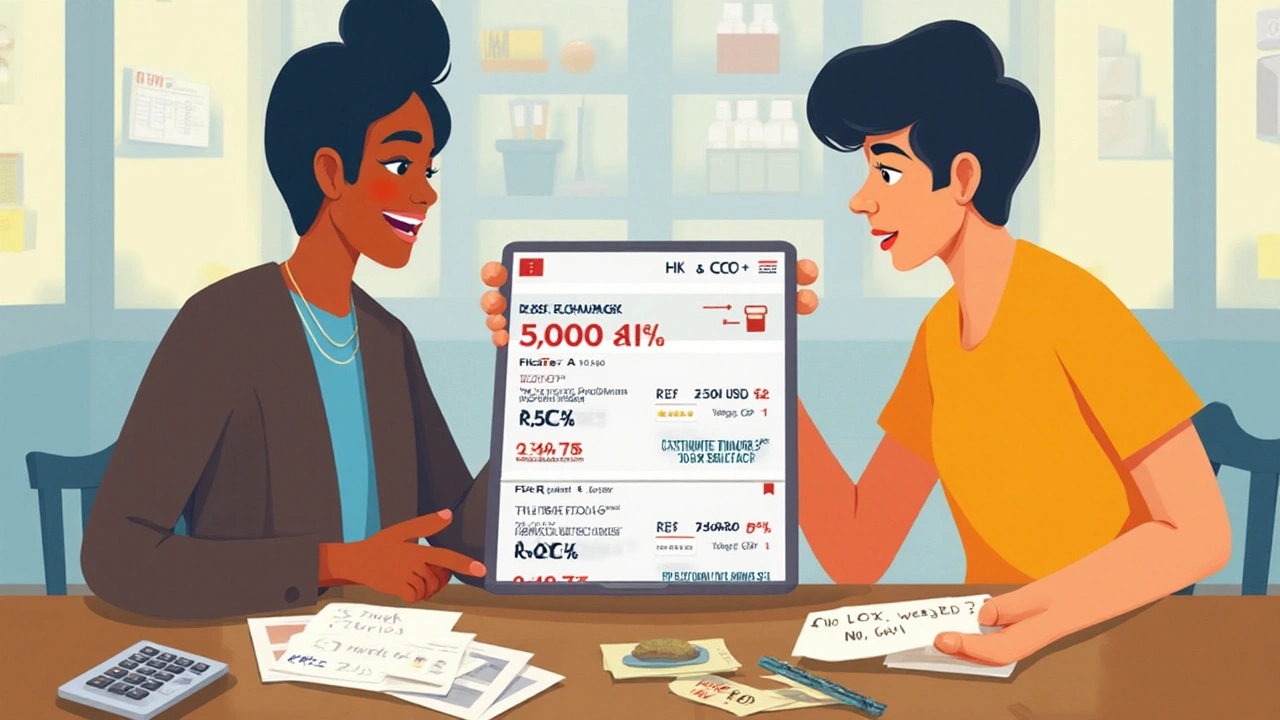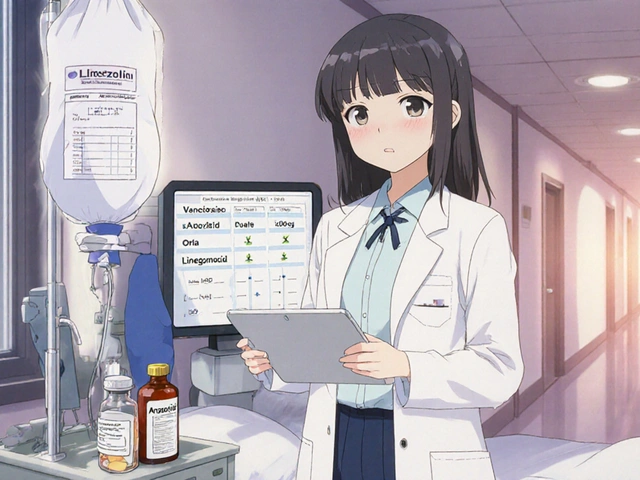Here’s the blunt truth: in Wales, your warfarin can be free on the NHS, yet the web is full of sketchy ads shouting about ultra-cheap “Coumadin” from overseas. If you’re trying to buy generic Coumadin online without hassle or risk, you need two things: a legal route and a fair price. You’ll see both here-what you’re actually buying (warfarin), what it should cost in the UK in 2025, how to stay safe, and the fastest steps to get it delivered without messing up your INR.
I live in Cardiff with two kids and a calendar full of school runs, so convenience matters to me too. But warfarin isn’t paracetamol. It needs INR monitoring, careful dose changes, and it doesn’t mix well with a lot of other meds. That’s why the legal bit matters as much as the price. I’ll keep this practical, UK‑specific, and up to date.
What you’re actually buying: Coumadin vs warfarin, strengths, and who it’s for
“Coumadin” is a brand name for warfarin. In the UK, you’ll almost always be dispensed “warfarin sodium,” not the Coumadin brand you might see in U.S. articles. The medicine is the same active ingredient, held to bioequivalence standards by the MHRA. The key with warfarin isn’t the brand-it’s consistent dosing and regular INR checks.
Who uses it? People with conditions where blood clots are a danger: atrial fibrillation, mechanical heart valves, prior deep vein thrombosis (DVT) or pulmonary embolism (PE), and certain clotting disorders. If that’s you, you already know the drill: INR monitoring and dose adjustments. If you’re new to warfarin, your GP or anticoagulation clinic will set you up with a starting dose and a plan for testing.
Strengths and colours in the UK are standardized to cut down on dosing mistakes:
- 0.5 mg - white
- 1 mg - brown
- 3 mg - blue
- 5 mg - pink
Typical UK packs come as 28 tablets. Clinics often give you a mix to hit your exact daily dose (say 3 mg most days, 2 mg some days). Never change dose on your own; adjust only on clinic or prescriber advice. That advice is backed by sources like the British National Formulary (BNF) and NICE anticoagulation guidance.
Important safety callouts, based on MHRA and BNF warnings:
- Bleeding risk is real. Any unusual bruising, nosebleeds, blood in stool/urine, or severe headache needs urgent attention.
- Pregnancy: warfarin is not safe during pregnancy. If you’re pregnant or trying, speak to your clinician about alternatives (often heparins).
- Diet: big swings in vitamin K intake (think sudden kale binges) can change your INR. Keep intake steady rather than “low.”
- Alcohol: moderation helps; binges can spike bleeding risk.
- Interactions: some antibiotics (e.g., metronidazole, trimethoprim‑sulfamethoxazole), antifungals (azoles), amiodarone, thyroid meds, rifampicin, many herbal products (St John’s wort) and even NSAIDs or SSRIs can change INR or bleeding risk. Always check before starting anything new.
INR monitoring options in 2025:
- Anticoagulation clinic or GP blood test schedule (standard).
- Home self-testing devices (e.g., CoaguChek). Some NHS clinics support this for suitable patients; private purchase costs several hundred pounds plus test strips. Do not switch to self-testing without clinic approval and a clear plan.
If your INR has been stable for months, buying your repeats online can be convenient. But keep your clinic in the loop-dose stability matters more than shaving a pound off the price.

Prices, where to buy legally in the UK (2025), and what to expect at checkout
The law first: in the UK, warfarin is prescription‑only. A legitimate online pharmacy will either:
- Dispense an NHS prescription sent electronically (England EPS) or arranged by your GP/clinic, or
- Offer a private prescription (usually via an online clinician) and courier the medicine to you.
Red flag if a website sells prescription warfarin with “no prescription needed.” That’s a marker for counterfeits or poor quality control. The regulator to know: the General Pharmaceutical Council (GPhC) regulates Great Britain pharmacies; the MHRA regulates medicines. You can check the pharmacy and its superintendent pharmacist on the GPhC online register by name.
Now, prices. Warfarin is not an expensive drug in the UK, but the route you choose changes what you pay out of pocket:
- Wales: NHS prescriptions are free. If you live in Wales and your GP issues an NHS script, you pay £0 per item.
- England: the NHS prescription charge per item changes annually each April. Many people use a prepayment certificate if they need medicines regularly. Your actual drug acquisition cost is low, but you still pay the standard NHS item charge unless exempt.
- Private online: you’ll see a consultation fee plus the medicine price and delivery. It’s still not pricey compared to newer anticoagulants, but you’re paying for the service and shipping.
Indicative private online pricing in 2025 (warfarin sodium, UK‑dispensed):
| Item | Typical UK pack | Price range (private) | Notes |
|---|---|---|---|
| Warfarin 1 mg tablets | 28 tablets | £3-£8 | Medicine price; excludes consultation and delivery |
| Warfarin 3 mg tablets | 28 tablets | £3-£9 | Similar range across strengths |
| Warfarin 5 mg tablets | 28 tablets | £4-£10 | Brand/manufacturer may vary |
| Private online consultation | Per request | £10-£35 | Depends on provider; some waive repeat fees |
| Tracked delivery (UK) | 24-72 hours | £0-£6 | Free over a spend threshold in some pharmacies |
Those figures are typical from UK distance‑selling pharmacies as of 2025, but they can shift. Medicine prices are usually the smallest part; the consultation and delivery are where you’ll see real differences. If you’re in Wales or have NHS exemptions in England, the NHS route is usually the cheapest.
What you’ll need to order online:
- A valid prescription: NHS electronic (if supported) or a private script generated by the online service after a questionnaire or chat.
- Your current dose schedule and INR history: they’ll ask for recent INR results and clinic details to ensure safe supply.
- ID and address: many pharmacies verify identity for controlled ordering and to prevent fraud.
- Delivery choice: standard tracked vs next‑day. If you’re running low, pay for faster shipping.
Terms you’ll see at checkout:
- No returns on prescription medicines (UK law) unless faulty.
- Substitution: pharmacy may dispense a different manufacturer than pictured, but same strength and ingredient. That’s okay for warfarin-just double‑check tablet strength and colour match your dose plan.
- Cut-off times: next‑day dispatch often needs orders before a set time (e.g., 3 p.m.).
Practical money tips:
- If you get regular repeats, batch them. One delivery saves on shipping fees.
- Ask your anticoagulation clinic to send your NHS script to a distance‑selling pharmacy if you can’t get to your usual chemist. In England, EPS makes this simple.
- Keep at least a 7-10 day buffer at home to avoid paying for urgent couriers.

Safety checks, real risks, comparisons, and your next steps
Warfarin is safe when used right, but it’s unforgiving if used wrong. Before you click “Buy,” work through this quick checklist.
Legitimacy checklist (UK):
- Is the pharmacy on the GPhC register? Search their trading name and superintendent pharmacist.
- Do they ask for a prescription or offer a proper online consultation? If not, walk away.
- Is there a UK address and clear phone/email support? Ghost sites hide this.
- Do they show the name of the prescriber service and how they store your records? Transparency matters for regulated services.
- Avoid importing from overseas sites that sidestep UK rules. Customs seizures and counterfeit risks aren’t worth a small discount.
INR and dose safety checklist:
- Keep your clinic updated if you change pharmacy. Supply changes shouldn’t change INR, but communications errors can.
- Stick to one manufacturer if it helps you stay organized, but don’t panic if the box looks different-match the strength and colour.
- If your INR target is, say, 2.0-3.0, know your last reading and your next test date. Late tests lead to safety calls from clinics for good reason.
- If you miss a dose, follow the advice on your yellow book or from your clinic. As a rule, don’t double up unless told to.
Common interaction landmines to avoid (BNF backed):
- Antibiotics raising INR: metronidazole, trimethoprim‑sulfamethoxazole, macrolides (e.g., erythromycin). Your prescriber may pre‑emptively adjust or add extra INR checks.
- Enzyme inducers lowering INR: rifampicin, carbamazepine. INR can plunge-needs tight follow‑up.
- Amiodarone and azole antifungals: INR often climbs; plan extra testing.
- NSAIDs (ibuprofen, naproxen) and SSRIs: bleeding risk goes up even if INR looks fine. Consider alternatives or gastro‑protection.
- Herbals: St John’s wort (lowers levels), ginkgo, and others-never add without a pharmacist’s input.
How it compares to nearest options (cost and life impact):
- Direct oral anticoagulants (DOACs) like apixaban, rivaroxaban, edoxaban, dabigatran don’t need INR tests and have fewer food effects. They’re more expensive per tablet, but on the NHS your cost is the same prescription charge (or free in Wales). Many patients prefer DOACs for convenience.
- Warfarin still wins for mechanical valves and certain conditions where DOACs aren’t licensed or recommended. It’s also easier to reverse in emergencies with vitamin K and prothrombin complex concentrate, which some clinicians like.
Trade‑offs:
- If you’re stable on warfarin and comfortable with INR testing, there’s no urgency to switch. Online ordering can save time.
- If your INR is a rollercoaster or diet is volatile, speak to your prescriber about whether a DOAC could reduce the juggling. NICE guidance supports DOACs for many with non‑valvular AF.
Risks and mitigations when buying online:
- Counterfeits: stick to UK‑registered pharmacies. If the price looks too good to be true, it usually is.
- Delay risk: order early and choose tracked delivery if you’re within a week of running out.
- Dose confusion: confirm strength and colour on arrival; line it up with your anticoagulation record.
- Record keeping: keep the pharmacy’s batch number and expiry. Handy if there’s a recall.
Ethical CTA (what to do now):
- If you live in Wales: ask your GP/clinic to issue your NHS prescription and send it to a distance‑selling pharmacy if leaving the house is hard. You’ll pay nothing.
- If you’re in England and pay charges: decide NHS vs private. NHS is usually simpler and cheaper per item; private can be swift if you’re between GP appointments.
- Choose a GPhC‑registered online pharmacy. Check the register in a new tab before you order.
- Have your latest INR info ready. Complete the safety questions honestly, including other meds and alcohol use.
- Pick delivery with a buffer. Aim to keep a week’s supply on hand at all times.
Mini‑FAQ
- Can I buy warfarin without a prescription? No-legal UK pharmacies must see a valid prescription or provide a proper online consultation that results in one. “No‑script” sites are unsafe.
- Is generic warfarin the same as Coumadin? Same active ingredient, held to MHRA bioequivalence standards. In the UK, you’ll almost always receive generic warfarin sodium.
- Does switching brands change my INR? It shouldn’t. Colours and strengths are standard here. Still, tell your clinic about any changes and stick with one manufacturer if possible to reduce confusion.
- How fast can I get it delivered? Many UK services offer 24-48‑hour tracked delivery if your prescription is approved before the daily cut‑off.
- What if I’m travelling? Carry your anticoagulation record, take extra tablets, and keep doses in original boxes. If you cross time zones, keep dose timing consistent based on hours, and check with your clinic before you go.
- What if I miss a dose? Don’t double up unless your clinic says so. Check your yellow book/clinic plan and call if unsure.
Troubleshooting by scenario
- No recent INR result: book a test first. Most legit online pharmacies won’t supply warfarin if your monitoring is out of date.
- Running out in 2-3 days: call your anticoagulation clinic or GP for an emergency script to a local pharmacy, then switch to online for the next cycle.
- New medicine started (like an antibiotic): tell your clinic. You may need an extra INR check or a temporary dose tweak.
- Bleeding or black stools: stop and seek urgent care. Bring your medicine pack and anticoagulation record.
- Pregnancy or trying to conceive: contact your prescriber immediately to discuss switching to a safer anticoagulant.
Why trust this guidance? It lines up with the BNF warfarin monograph, MHRA safety communications, and NICE anticoagulation guidance current to 2025. UK pharmacy practice hasn’t changed the basics: prescription required, GPhC oversight, and patient safety checks before dispensing.
Bottom line: you can buy generic warfarin online cheaply and legally in the UK, but only through registered services that respect prescriptions and INR monitoring. If you’re in Wales, your best deal is the NHS route-free scripts, safe supply. If you need the speed of a private online service, budget for the consult and delivery, check the GPhC register, and keep your clinic in the loop. That’s the sweet spot: safe, legal, and still kind on the wallet.







18 Comments
Just wanted to say thanks for laying this out so clearly. I’m in India and have family on warfarin - seeing UK-specific info like this helps me guide them better. The colour codes and INR tips? Gold. No fluff, just facts. Keep this kind of stuff coming.
One cannot help but reflect upon the profound epistemological tension between pharmaceutical accessibility and regulatory sovereignty. The NHS, as a moral architecture of care, stands in stark contrast to the commodified logic of global e-pharmacies. Yet, in the quiet desperation of the chronically ill, even the shadow of convenience becomes a luminous path. Is it not the state’s duty to ensure that this path remains unobscured by profit?
Wait so you’re telling me I can just order warfarin online and not tell my GP? 😏 I’m so tempted to try this… my last INR was 3.8 and I still took my pill like a champ 💅 #trusttheprocess
u mean coumadin or warfrin? i always get confused. is it the same thing or is one fake? i saw a site that sold it for 2 pound and said its from russia. is that legit? or am i gonna end up in hospital with a bleed? 😅
This is one of the most thoughtful, well-researched posts I’ve seen on this topic in years. Thank you for emphasizing safety over savings. Warfarin isn’t something to gamble with, and your breakdown of GPhC checks and INR protocols is exactly what patients need. The NHS vs private comparison? Perfect. Keep doing this work.
Let me break this down for you. The NHS isn’t giving you free warfarin - they’re controlling your dosage to keep you dependent. The MHRA, GPhC, even NICE - all part of a coordinated pharmaceutical cartel. You think those colour-coded pills are for safety? Nah. They’re barcode trackers. Every time you take a blue 3mg, your location and INR get uploaded to a central server. The real reason they won’t let you import from India? They don’t want you discovering that 5mg is 98% bioequivalent and costs $0.12. You’re being gaslit into paying for convenience.
Thank you for writing this. As someone who’s been on warfarin for 12 years and lives in Scotland, I’ve seen the system work and fail. The key is consistency - clinic, dose, diet. Online ordering? Fine, if it’s registered and you keep your clinic looped in. But never let convenience override caution. I’ve had two near-misses because someone switched brands without telling me. The colour matters. The name doesn’t.
Okay but have you ever thought… what if warfarin is just a placebo and the real magic is in the INR tests? Like, what if the body just needs to believe it’s being monitored? 🤔 I’ve heard the NHS uses AI to predict bleeding risk based on your grocery receipts now. They’re not saving lives - they’re optimizing your data points. Also, St John’s wort is totally legal in Canada, why are they scared of it? 🌿
UK says free. US says $200. Who’s lying? Probably the Brits. They’re just hiding the real cost in taxes. Also, warfarin is a Soviet-era drug. Why are we still using it? Because the pharma lobby owns the FDA, MHRA, and your GP’s lunch. Buy from India. Save your life. Fight the system.
Bro this is fire. I’m from Lagos and my cousin in London just started warfarin. This guide? Lifesaver. The part about vitamin K and antibiotics? Spot on. I told her to stop eating spinach smoothies and she cried. But now she’s stable. Also, if you’re using CoaguChek, get the strips from a UK pharmacy - the ones from Amazon UK are legit. Don’t trust the ‘discount’ sites. They’ll sell you chalk with a blue label.
so like… i just read this whole thing and now i feel like i need to go to therapy? why is this so complicated? i just wanna take a pill and not think about it. why does it have to be this much work? 😭
Let’s be honest - this post is a beautifully disguised advertisement for private online pharmacies. You mention NHS free access, but the entire structure pushes you toward the paid route. The ‘convenience’ narrative? Classic. You’re not helping patients - you’re monetizing their anxiety. Warfarin is not a subscription service. It’s a medical lifeline. And you’re turning it into a Shopify store.
Biggest mistake people make is thinking the colour means the dose is different. It doesn’t. It’s just for visual ID. I had a guy come in last week with 5mg pink pills and thought they were wrong because his last pack was blue. He’d been taking double. Got lucky. Always check the label. Not the colour. Not the brand. The number.
Warfarin is the last great act of patient discipline in modern medicine. You don’t just take it - you negotiate with it. Every kale salad, every ibuprofen, every missed INR - it’s a silent conversation with your own mortality. And yet we treat it like a grocery run. We want it cheap, fast, anonymous. But warfarin doesn’t care about your hustle. It only cares if you’re alive tomorrow.
While I appreciate the thoroughness of this exposition, I must express my profound concern regarding the normalization of online pharmaceutical procurement. The erosion of face-to-face clinical oversight, even under the guise of convenience, represents a significant departure from the ethical foundations of medical practice. One must ask: at what cost does efficiency arrive?
So… if I buy it online and my INR goes haywire… is that my fault? Or is it the pharmacy’s fault for not ‘properly’ consulting me? And who pays for the ER visit? The NHS? The pharmacy? Or do I just… die quietly? 😘
Love this. My dad’s been on warfarin for 15 years and we used to drive 45 mins for INR checks. Now he orders online every 3 months, does home testing, and still sees his clinic twice a year. The system works when you combine tech with care. Don’t let the fear of change stop you from using what’s safe and legal. You got this.
Just saw @4832’s comment - my mum does the same. Home tester, got the device through her clinic. Took a bit of training but now she doesn’t miss a single test. The pharmacy delivers on Tuesdays. She even gets a text reminder to take her pill. Tech + care = magic. Not all online is sketchy. Some of it’s just… good.
Write a comment